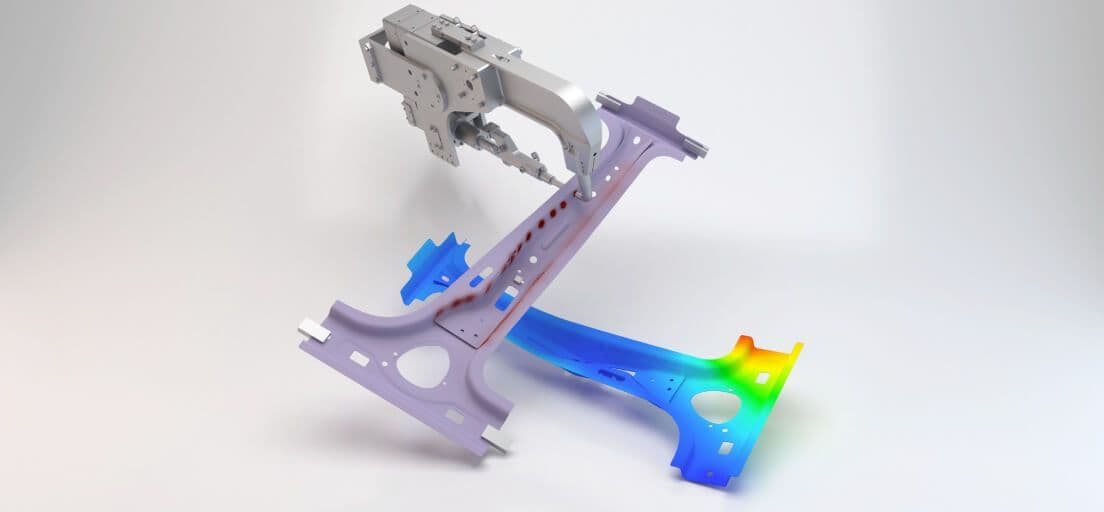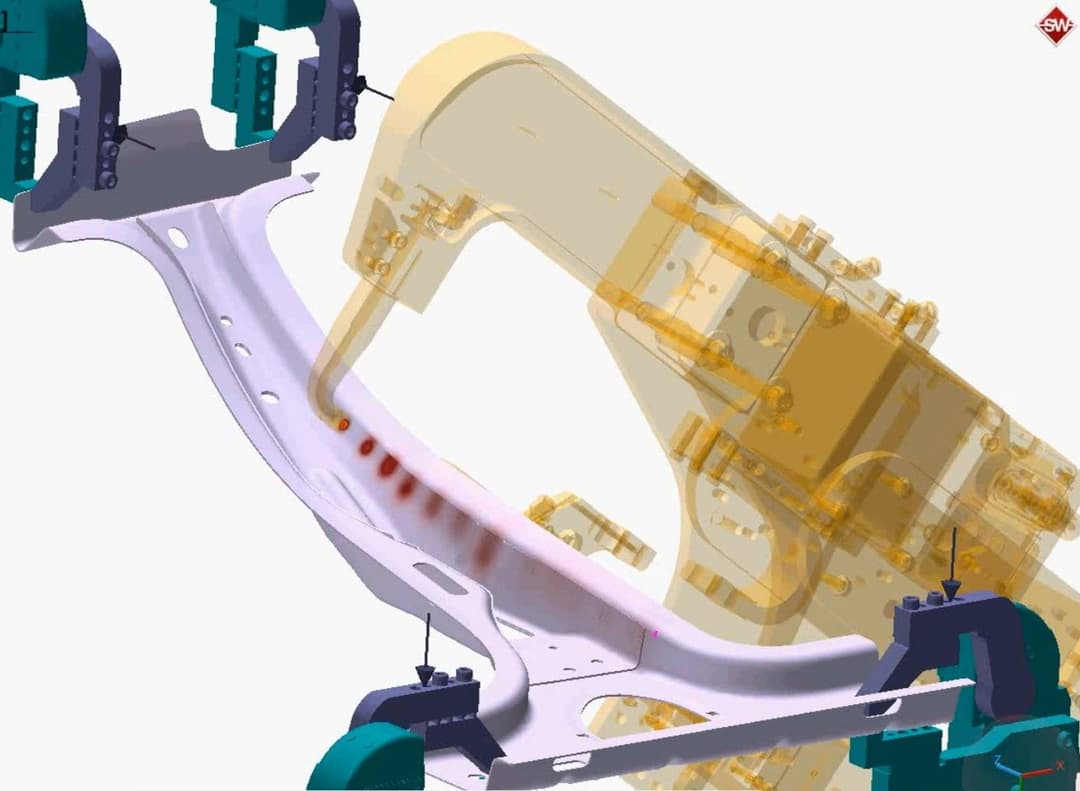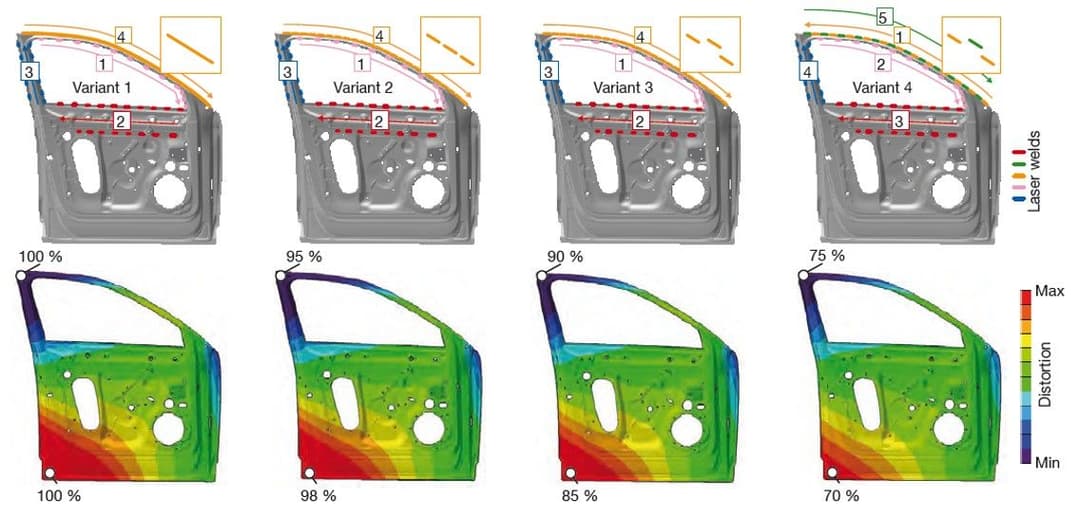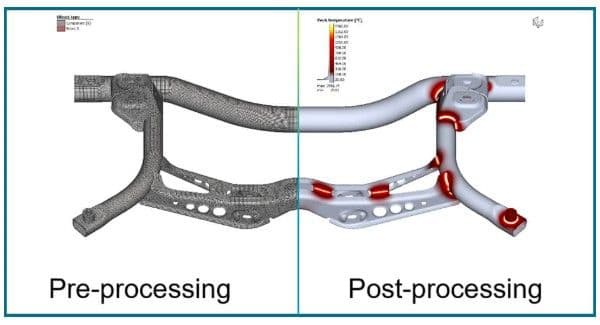© 2025 Hexagon AB and/or its subsidiaries
© 2025 Hexagon AB and/or its subsidiaries

First-class solution for fusion and pressure welding processes
imufact Welding is used for modelling and optimizing a wide range of fusion and pressure welding processes, taking into account weld sequence and clamping. Processes such as arc welding, laser beam welding, electron beam welding, brazing, resistance spot welding as well as the generative manufacturing process ‘Direct Energy Deposition’ (DED or WAAM) can be modelled in Simufact Welding. Additionally, Simufact Welding can be used to model the heat treatment, different variants for cooling and unclamping as well as the mechanical load on welded structures.
The key benefits of using Simufact Welding include:
Benefits And Features
Optimize the welding process and parameters to achieve first-time-right quality

Predict Thermal and Mechanical Behavior
Simufact Welding predicts the welding process outcome, including thermal, distortion, stress/strain, etc.It allows for an understanding of the outcome before any physical tryout, identifies risks early in the PD process, and evaluates the impact of variability and non-nominal conditions.

Process and fixture optimization
This powerful solution enables optimization of the welding process and/or fixtures, and cycle time, provides a detailed view of the process, and evaluates many process/design variants quickly and at low risk/cost.

Process oriented, all-in-one solution
Simufact Welding is easy to use due to its process-oriented and intuitive user interface. It also includes comprehensive functionality for all simulation steps, from modeling to calculation and the evaluation of results.
Training and Resources
Connect and collaborate with your peers and experts
The Nexus Community provides you with excellent peer forums and the opportunity to learn from thousands of others in your industry. Currently, hundreds of peer forums waiting for you to explore into. Discover best practices and get the answers you need to succeed. Register for Nexus to get full access the Community forums.
Our team is ready to help
Our technical support teams are on hand to answer your questions. Contact us through our online form and we will get right back to you.
You might be interested in...
Related products

First-class solution for fusion and pressure welding processes
imufact Welding is used for modelling and optimizing a wide range of fusion and pressure welding processes, taking into account weld sequence and clamping. Processes such as arc welding, laser beam welding, electron beam welding, brazing, resistance spot welding as well as the generative manufacturing process ‘Direct Energy Deposition’ (DED or WAAM) can be modelled in Simufact Welding. Additionally, Simufact Welding can be used to model the heat treatment, different variants for cooling and unclamping as well as the mechanical load on welded structures.
The key benefits of using Simufact Welding include:
Take advantage of various learning opportunities
Visit the Nexus Academy Catalog for a complete list of educational content. You can enroll for training, complete self-paced courses, register for distance learning, classroom instruction, live training events, and download or print your completion certificate.

Dive into our documentation to explore the full potential of our product offerings
Your ultimate resource for practical guidance and support. Here you’ll find a wealth of step-by-step how-to guides, detailed tutorials, and handy tips and tricks. Whether you’re troubleshooting an issue or looking for ways to optimize your use of our products, our Documentation Center provides clear and concise information to help you get the most out of your experience.

Expand your knowledge
Our Knowledge Base is your go-to hub for in-depth insights and valuable information. Explore a rich collection of articles and detailed white papers crafted to provide you with the knowledge you need to excel. From industry trends to expert analyses, our Knowledge Base is designed to keep you informed and empowered with the latest and most relevant content.

Downloads are only available on the desktop version. Please access our site from a desktop to download.
Get the most out of our resources.
For the latest updates, resources, and software, please visit our Download Center
Click the link to access the files you need today
Frequently Asked Questions
No. While the meshes of components and filler should have a reasonably similar size, it is not necessary that the nodes and elements are aligned with each other or even shared between the contact bodies. This is a big advantage of the contact algorithm used in Simufact Welding as it enables an easy and flexible meshing and incorporates a physical reasonable criteria for activation of “glued” contact.
Simufact Welding uses multiplicative plasticity as default whereas Simufact Forming uses only additive plasticity. As this is not compatible, you need to use additive plasticity in Simufact Welding when transferring the results to Simufact Forming.
There are several sources for material data, starting with the extensive database of the software. Frequently material data of similar materials can be adapted. Besides this, we have good experience using material data generated with the software JMatPro of SenteSoft, if adapted as described in our tutorial. Please contact us if you need material data for your specific material.